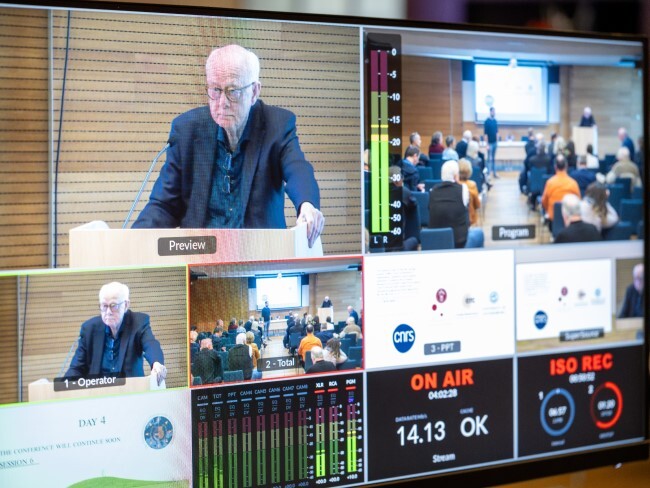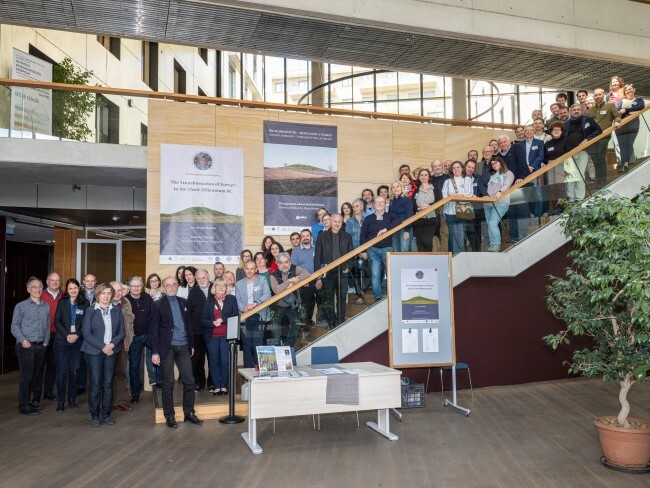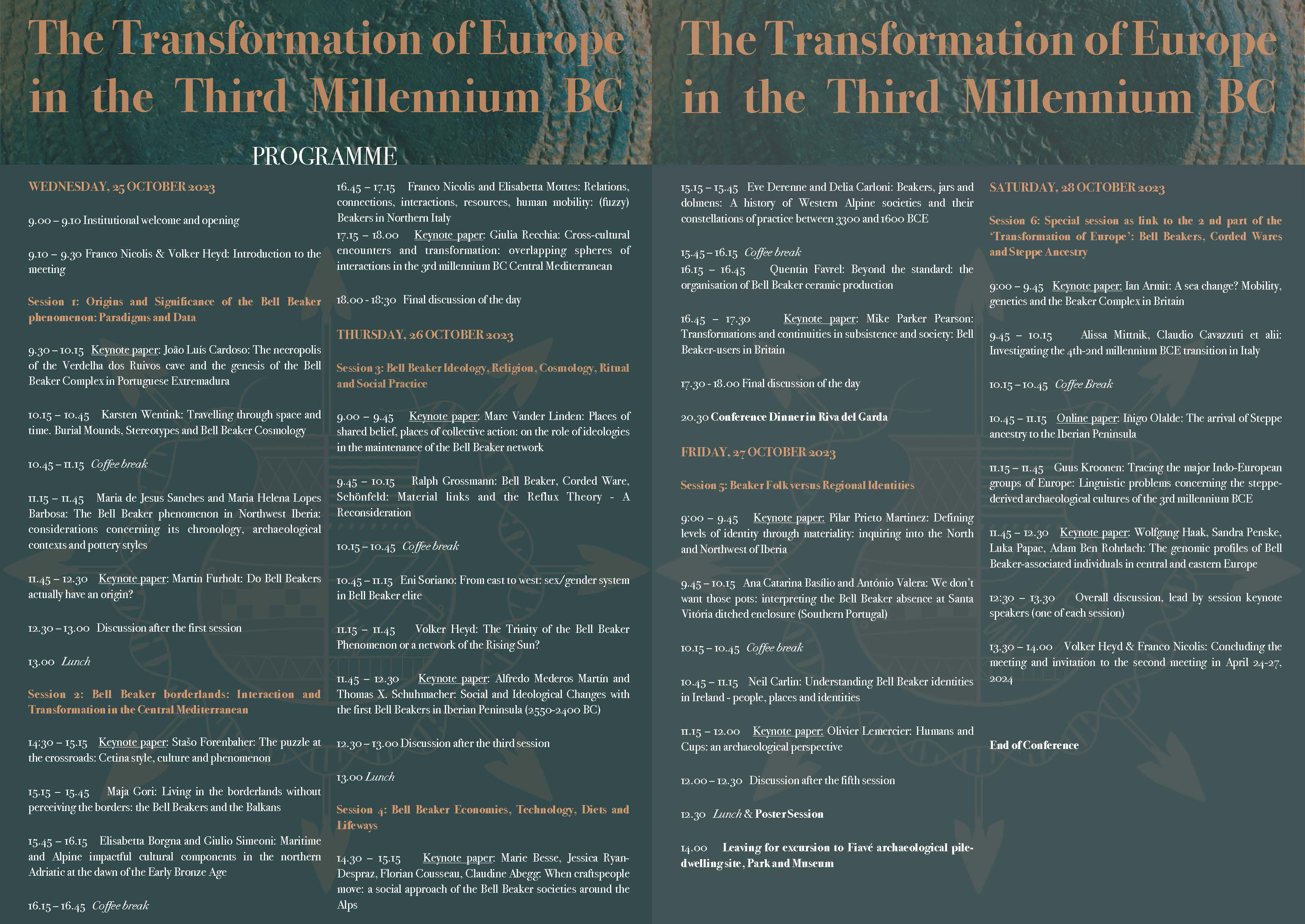In recent months, researchers have been able to discuss the changes in prehistoric Europe in the 3rd millennium BC at two international conferences. The 28 and 23 papers presented at these events are now available online.
We hope that this will be a great opportunity to give insight into this pivotal period not only to researchers of the period, but also to those interested in the prehistory of Europe. The aim of the initiative is to make the scientific results available to the widest possible audience through open science and citizen science.
Under the title of “The Transformation of Europe in the Third Millennium BC”, two meetings were held. The first meeting took place in October 2023 in Riva del Garda, Italy. The second meeting was in Budapest from 24-27 April 2024, at the Institute of Archaeology, HUN-REN Reserch Centre for the Humanities.
 Lecture by Professor Kristian Kristiansen (photo: János Beregszászi)
Lecture by Professor Kristian Kristiansen (photo: János Beregszászi)
The focus of the first meeting was on the western parts of Europe, while the Budapest meeting focused on the eastern, central and northern parts of the continent in the 4th/3rd Millenium BC, with a special focus on the Yamnaya, Globular Amphora and Corded Ware cultures, in the region of the Caucasus, the Eastern European Steppe, the Danube Valley, the Carpathian Basin, the Polish Lowlands and Scandinavia.
The importance of the period lies in the fact that the cultural framework of the period was completely transformed by the arrival of communities from the Eastern European steppe to the Western Eurasian region, and the genetic landscape of modern Europe was formed. The history of the era is marked by the acceleration of the domestication of horses, the increase in the consumption of dairy products, the emergence of the technological principles of later bronze crafts and new networks of interaction. It is a process that spans a vast area and is based on the spread of the Indo-European languages. The history of the period was not without difficulties. The communities moving into Europe may have been physically dominant (they were much taller and more robust than the people living here) and the control of territory was important to them. They also brought diseases, the appearance of the plague being linked to them.
 Speakers at the Budapest conference (photo: János Beregszászi)
Speakers at the Budapest conference (photo: János Beregszászi)
The distinguished speakers of the conferences come from the most important research locations of the era: Bulgaria (Sofia), Denmark (Aarhus, Copenhagen), Finland (Helsinki), the Netherlands (Leiden), Croatia (Zagreb), Poland (Krakow, Poznań, Rzeszów), Hungary (Budapest, Debrecen, Szeged), Republic of Moldova (Kisinyov), Italy (Trento, Venice), Germany (Berlin, Bonn, Kiel, Leipzig, Mainz, Munich), Romania (Cluj-Napoca), Switzerland (Bern), Sweden (Gothenburg, Lund) and Harvard Medical School, USA.
28 presentations from the meeting in Italy are available here.
Conference programme:

The renowned invited speakers of the Budapest conference summarized the current state of research in 28 presentations over the four days, of which 23 presentations are available on YouTube.
Conference programme:

The main organisers of the meetings were Volker Heyd ERC YMPACT project (University of Helsinki), Franco Nicolis (Archaeological Heritage Office, Trento, Italy) and Gabriella Kulcsár (HUN-REN RCH Institute of Archaeology). The event in Budapest was supported by the National Cultural Fund, the Archaeolingua Foundation, the Kiskunság National Park, the Danube Valley Public Foundation, the Lendület Seed Ecology Research Group, and Salisbury Ltd.
The full conference programme and abstract volume are available on the conference website:
https://www.transformeurope2budapest2024.com/
https://drive.google.com/file/d/1ft7tiIgngYxI0fQnIaLG_LPT_ya_m73n/view?usp=sharing
The programme for the poster sessions can be found here:
https://drive.google.com/file/d/141kw5pJCwmXBPqYqC0d1VSOj6aH3Kitc/view?usp=sharing

